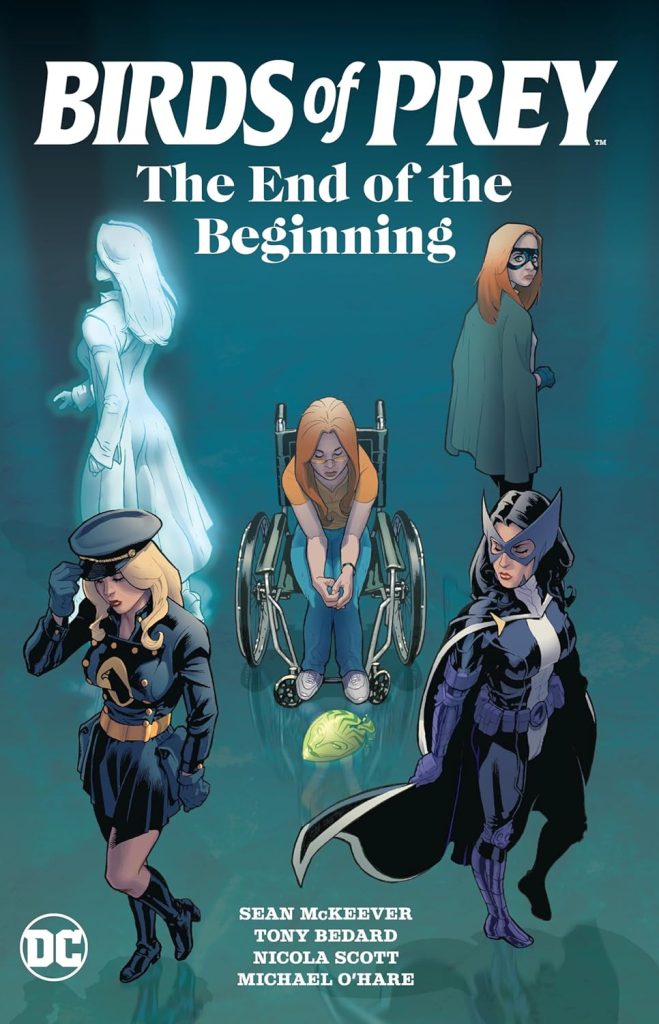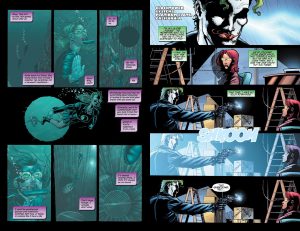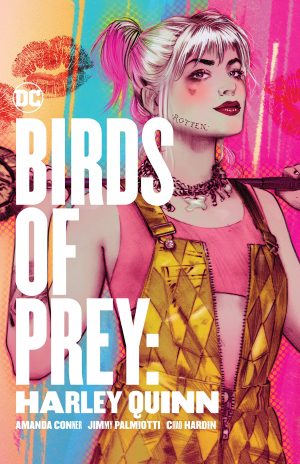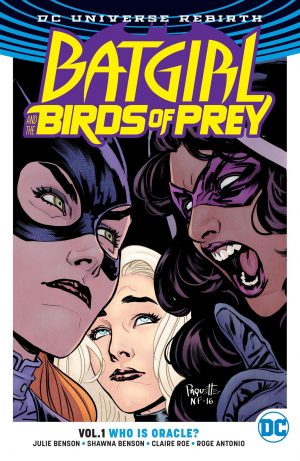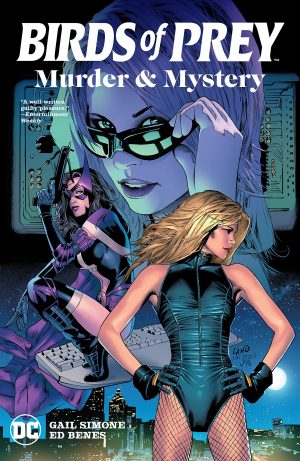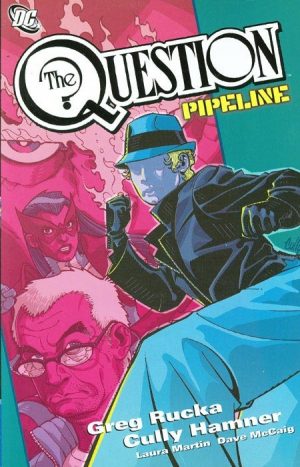Review by Ian Keogh
Don’t spend too much time thinking about the title, which seems to be a reference to the issues collected here being the final ones from the first Birds of Prey series. While this isn’t their finest hour, the attraction for fans of the characters will be that some later issues have never previously been collected.
When originally published there was much fan resentment about Gail Simone no longer writing Birds of Prey, and with some justification as she’d transformed an average series into something that at best was genuinely heartwarming. Unfortunately, though, even removed from the emotional response of 2008, most of what’s here doesn’t stand up very well.
Sean McKeever’s work opens the collection, already reprinted in Metropolis or Dust. In other work a great strength has been his convincing characterisation and the way the cast interact, but that lets him down here. It might have just been a case of needing more time to work into the series, but he didn’t get it, and while the plots have their moments, there’s nothing satisfying from start to finish. It leaves artist Nicola Scott as the star turn over the first half of the book (sample spread left), her clean, clear art being emotionally strong while also supplying the action.
Tony Bedard writes the remainder, with the first half of his run previously available as Platinum Flats. The ideas are mixed, some working well, like Oracle once again withdrawing to the unknown guide and manipulator, and some are ill-advised, like a trivial use of an online paedophile. Scott’s art is good, but Michael O’Hare has the layouts down, but isn’t quite the finished article.
O’Hare’s art continues into the issues not previously reprinted (sample right). The Birds of Prey have relocated operations to the city of Platinum Flats in order to deal with a criminal syndicate, the relationship between Oracle and Black Canary has deteriorated, and the Joker’s just arrived in town. Bedard doesn’t ever entirely convince that the situation is so complex relocation is required, and there’s a strange mixture of ongoing operations with the teen drama of Misfit settling in to a new high school. It’s a combination that never gels, each portion detracting from the other, but realising that, Bedard just dumps the Misfit sequences altogether.
There’s an effective Joker sequence, a nice trip to Las Vegas for Oracle and Black Canary drawn by Scott McDaniel, then a rushed and unmemorable ending to a threat that was dragged on way too long. The final couple of issues are also found in Oracle: The Cure, also by Bedard, but you’ll be left in no doubt why the original Birds of Prey series ended and why DC had to ask Simone back for End Run.
